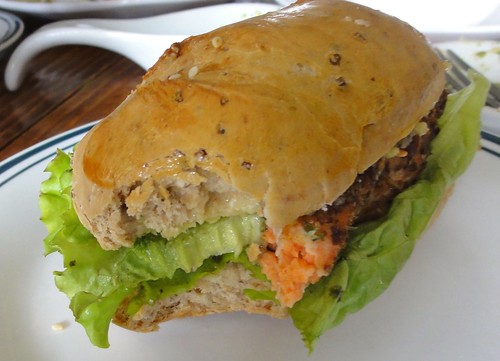Lorna Muñoz
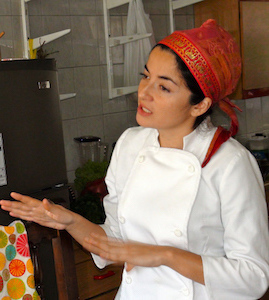
- Location
-
CHILE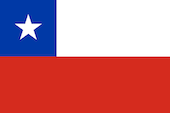
- First meeting
- 2011, Mar 31st
- Last update
- Keywords
- seaweed cooking, traditional use of seaweeds in Chilean cuisine
In March 2011, the Algonauts Project was on the island of Chiloe in Chile in the context of a partnership with the Council of Finistère1 (Brittany, France). This mission on algae in Chiloé was led along with Nolwenn Boucher, International Volunteer representing the Council of Finistère in Castro. During this stay, we met numerous stakholders of the Chilean algal industry (elected representative, researchers, algueros, industrials, etc.) from the Ancud area. Among them, we had the pleasure to spend a day with the chef Lorna Muñoz from Castro.
Seaweeds are part of the Chilote culture and is used in traditional dishes such as the Cazuela de cordero y luche (a pot of lamb and red seaweed Porphyra (nori) or the Ceviche de cochayuyo (fish marinade with brown seaweed Durvillea antarctica).
But the crush between Lorna and the seaweeds occurred when Simone Grass and Danny Caderon from Finistère came to Chiloé. Simone and Danny run culinary workshops “Cuisine et Algues” in Brittany and were in Chiloe for a mission of development and promotion of chilote seaweeds in gastronomy in the context of the same cooperation program.
Since then, Lorna imagines, innovates and creates recipes based on seaweeds from Chiloe for the buffets she organizes and in her restaurant La Travesia.
A cooking workshop with Lorna
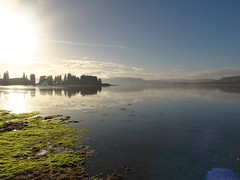 The day starts with a tour to the shore for harvesting seaweeds in the beautiful setting of Chilean Patagonia in the early morning. We are a bit early for the low tide and it’s a small harvest but Lorna takes us then to discover the market of Castro and its stalls well stocked in cochayuyo and luche.
The day starts with a tour to the shore for harvesting seaweeds in the beautiful setting of Chilean Patagonia in the early morning. We are a bit early for the low tide and it’s a small harvest but Lorna takes us then to discover the market of Castro and its stalls well stocked in cochayuyo and luche.
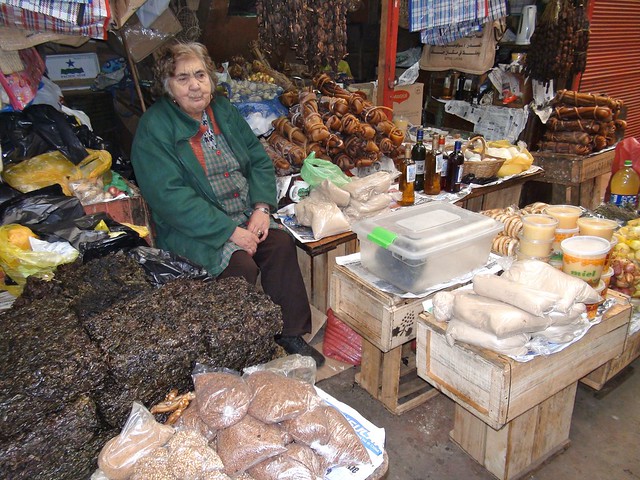
 On the menu of this cooking workshop, use of seaweeds from Chiloe and of local products such as potatoes and salmon:
On the menu of this cooking workshop, use of seaweeds from Chiloe and of local products such as potatoes and salmon:
- Terrine of hake and Luche (Porphyra)
- Cochayuyo’s Stew
- Ceviche de Cochayuyo
- Indigenous mashed potatoes with Luche
- Pesto de Lamilla (Ulva lactuca)
- Seaweed crusted salmon burger in its cochayuyo bread
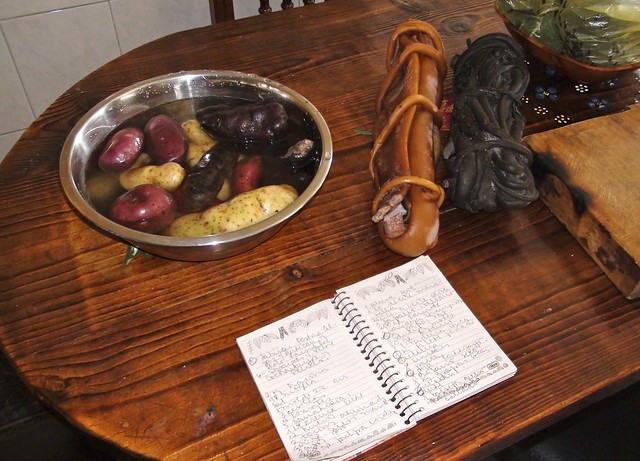
A few recipes (in Spanish)
Terrina de Merluza y Luche
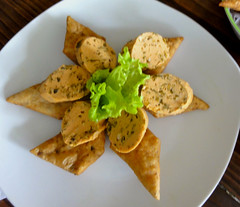 Ingredients
Ingredients
- 250 grams hake fillet
- 3 egg yolks
- 3 tablespoons cream of milk
- Salt
- Pepper
- Merkén (traditional condiment in Mapuche cuisine in Chile)
- Half-lemon zest
- Hydrated Luche
Preparation
- Grind the clean hake fillets, until it becomes a fine paste.
- Mix the cream with the egg yolks. Season with salt, pepper, merkén and lemon zest.
- Mix the crushed fish and the cream; incorporate then the luche.
- Arrange a piece of foil paper on the table, and put then the fish on it.
- Close the foil paper by forming a caramel with tight edges.
- Cook in a preheated bain-marie oven for 15 minutes.
- Serve as a hot or cold starter, accompanied by a salad.
Pesto de Lamilla
 Ingredientes
Ingredientes
- Clean and beautiful Lamilla (Ulva Lactuca)
- Juice of 2 lemons
- Salt
- Pepper
- ½ cup toasted walnuts
- Grated cheese
- Olive oil
- Cilantro
Preparation
- Mix all the ingredients into a food processor, check the seasoning, serve as an accompaniment to fish and shellfish.
Salmòn en costra de algas
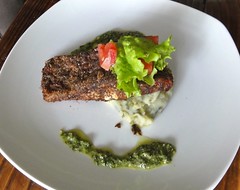
Ingredients
- 1 fillet of skinless and boneless salmon
- Salt
- cinnamon
- 1 egg
- Flour
- Lemon juice
- Dry and ground Cochayuyo
Preparation
- Dry Cochayuyo: Corte el atado de cochayuyo. Cut the bundle of cochayuyo. Bring to a high temperature oven until it stops making noise. Remove from the oven. Chill and shred in a food processor.
- Season the fish fillet.
- Add a few drops of lemon juice.
- Pass through flour, then the egg and finally the ground algae.
- Cook on both sides in an oiled skillet
For more information
-
Lorna Muñoz’s book :
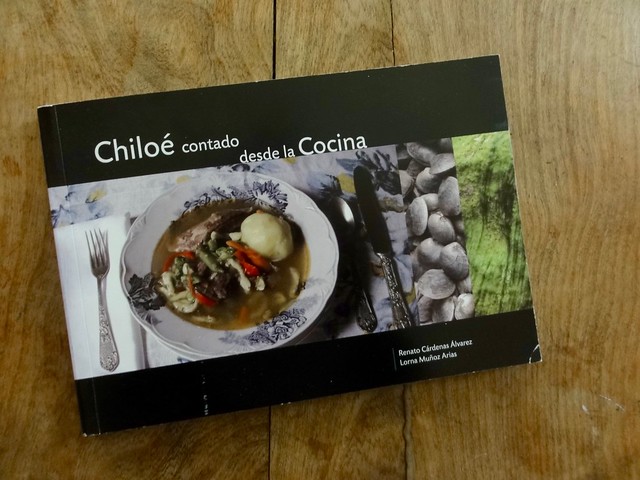
-
A video report from 2015 about Lorna Muñoz and her restaurant La Travesia (in Spanish) :
Footnotes
-
From 2005 to 2016, a decentralized cooperation program was established between the province of Chiloé in Chile and the Department of Finistère on the basis of geographical similarities, socio-economic problems and pre-existing relations between the two territories . The aim of this program was, in particular, to develop exchanges of experience and know-how between the peoples of the two territories and to work together on common problems with a view to sustainable development. ↩
